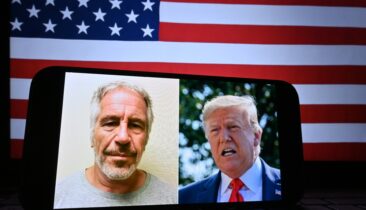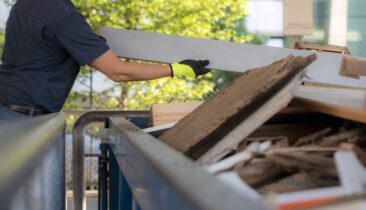Das Solarflugzeug „Solar Impulse 2“ ist nach einem fünftägigen Rekordflug von Japan nach Hawaii sicher auf dem Archipel gelandet. Der Schweizer Pilot André Borschberg setzte das nur mit Sonnenenergie betriebene, einsitzige Fluggerät kurz vor 18.00 Uhr (MESZ) auf einem Flughafen bei Honolulu auf.
In 120 Stunden war er vom japanischen Nagoya bis nach Hawaii geflogen und stellte damit einen Weltrekord für den längsten Alleinflug ohne Zwischenlandung auf.
Die Bestmarke in dieser Disziplin hatte bisher der mittlerweile tödlich verunglückte US-Abenteurer Steve Fossett gehalten: Vor neun Jahren war er 76 Stunden allein geflogen. Als nächste Etappe soll „Solar Impulse 2“ nach Phoenix im US-Staat Arizona fliegen, hies es auf tagesschau.de.
Der „Sonnenflieger“ war am 9. März in Abu Dhabi zu seiner Weltumrundung gestartet, die nicht zuletzt auch als Werbezug für die Effizienz der umweltfreundlichen Sonnenenergie gedacht ist. (tagesschau.de)










Leider ist diese technisch-wissenschaftliche und menschliche Meisterleistung hier bei den OD-Lesern auf kein Interessse gestossen…Schade!
http://www.solarimpulse.com
@Solar: Das stimmt nicht ganz. Weil ein Artikel nicht kommentiert wird, muss dies nicht bedeuten, dass er auf kein Interesse stößt. Er wird deshalb nicht diskutiert, weil die Angelegenheit vielleicht keinen Diskussionsstoff bietet, jedenfalls nicht für Laien, oder weil das Thema nicht umstritten ist, weil es kein negativen, sondern nur positive Reaktionen hervorruft. So ist das in einem Forum. Eine Niederlage der AS Eupen wird in der Regel häufiger kommentiert als ein Sieg mit 4:0 oder 5:0. Da kann man zwar schreiben „Super“ oder „toll“. Aber wenn das 4 oder 5 geschrieben haben, ist das Thema durch. Wenn es aber eine knappe Niederlage gibt, womöglich sogar aufgrund einer Fehlentscheidung des Schiedsrichters, dann kochen natürlich die Emotionen hoch. Und im Fall des Solarfliegers können die Leser nur staunen, aber nicht jeder Leser hat das Wissen, um darüber „en long et en large“ zu diskutieren. Gruß
Ach, was ist denn daran eine technische Meisterleistung?? Das läuft nur unter dem Titel „Solarirrsinn 2.0“, so wie bei der Stromproduktion nach Wetterlage (1.0), wo es sich auch nur um das „gute Gefühl“ geht. Es wird niemals ein „Solarflieger“ Touristen nach Malle fliegen, das geht nur mit Kohlenwasserstoffantrieb, aber den grenzdebilen „in 80 Tagen um die Welt“ Irrsinn bejubeln, das steht auf der grünen Agenda…
Danke sehr, Herr Cremer, für Ihre Klarstellung. Ich habe Sie sehr gut verstanden. Offensichtlich habe ich meine eigene Begeisterung fälschlicherweise auf andere, weniger interessierte und/oder begeisterte Leser überschätzt :-)
BREAKING NEWS 15.7.2015
SolarImpulse Weiterflug aus Hawaï verlegt bis Frühjahr 2016. Hier die heutige Pressemitteilung:
JULY 15TH, 2015 | 10:48AM UTC
BREAKING NEWS: NO FLIGHT UNTIL 2016
Despite the hard work of the Solar Impulse team to repair the batteries which overheated in the record breaking oceanic flight from Nagoya to Hawaii, the solar powered airplane of Bertrand Piccard and André Borschberg will stay in Hawaii until early spring 2016.
Following the longest and most difficult leg of the round-the-world journey which lasted 5 days and 5 nights (117 hours and 52 minutes), Solar Impulse will undergo maintenance repairs on the batteries due to damages brought about by overheating.
During the first ascent on day one of the flight from Nagoya to Hawaii, the battery temperature increased due to a high climb rate and an over insulation of the gondolas. And while the Mission Team was monitoring this very closely during the flight, there was no way to decrease the temperature for the remaining duration as each daily cycle requires an ascent to 28’000 feet and descent for optimal energy management.
Overall the airplane performed very well during the flight. The damage to the batteries is not a technical failure or a weakness in the technology but rather an evaluation error in terms of the profile of the mission and the cooling design specifications of the batteries. The temperature of the batteries in a quick ascent / descent in tropical climates was not properly anticipated.
Irreversible damage to certain parts of the batteries will require repairs which will take several months. In parallel, the Solar Impulse engineering team will be studying various options for better cooling and heating processes for very long flights.
The University of Hawaii with the support of the Department of Transportation will host the airplane in its hangar at Kalaeloa airport. Post-maintenance check flights will start in 2016 to test the new battery heating and cooling systems. The Round-The-World mission will resume early April from Hawaii to the USA West Coast. From there Solar Impulse will cross the USA to JFK in New York before making the Atlantic crossing to Europe and then returning the point of departure in Abu Dhabi.
Solar Impulse is attempting a historic first of flying around the world only on solar energy. And while Solar Impulse has completed 8 legs, covering nearly half of the journey, setbacks are part of the challenges of a project which is pushing technological boundaries to the limits. Solar Impulse will try to complete the first ever round-the-world solar flight in 2016 and this delay will in no way influence the overall objectives of this pioneering endeavour.
HINWEIS – Team aus der Stadt Aachen mit Sonnenwagen bei der World Solar Challenge durch Australien https://ostbelgiendirekt.be/sonnenwagen-australien-423189